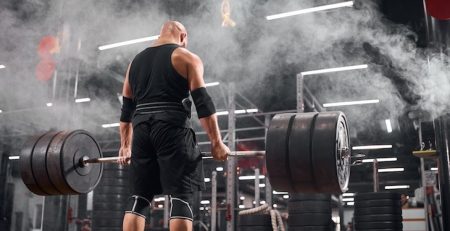Most frequent injuries in sports
Rehabilitation and Treatment for Sports Injuries
Professional and amateur players also sustain sports-related injuries, which can lead to incorrect physical condition assessments, a disregard for safety procedures, and undue strain. Injuries including fractures, muscle sprains, and ligament tears are the most often seen ones. Most injuries need several weeks to several months to heal, and rehabilitation experts must be present to supervise the process.
The following are the most frequent and dangerous injuries:
- Putting too much pressure or force on a contracted muscle might result in muscle strain.
- An excessive amount of stress and displacement on the knee can cause an anterior cruciate ligament (ACL) injury.
- A bad leap or landing, as well as a direct impact on the tendon, can injure the Achilles tendon.
- Excessive strain on the arms, elbows, and hands can cause epicondylitis, often known as tennis elbow.
- When the knee joint experiences both flexion and rotation at once, a meniscus tear happens.
- Tibia dislocation: The tibia can become dislocated as a result of too much strain on the leg.
- Stress fracture of the foot: The fifth metatarsal bone is subjected to excessive stress, resulting in this injury.
- Injury-related incidents can occur in practically every activity, but bodybuilding, hockey, soccer, figure skating, gymnastics, track and field, as well as extreme sports like snowboarding and alpine skiing, are particularly prone to them. Additionally, different styles of wrestling carry a larger risk of injury.
Reparations after Injuries
Depending on the kind and extent of the damage, rehabilitation is customised for each person. Sports-related injuries may be divided into two categories: those that require rehabilitation to return to everyday activities and active physical involvement, and those that leave people with impairments and force them to adjust to a new way of life. Spinal cord injuries and traumatic brain injuries are two examples of incapacitating wounds.
While a cold compress may be sufficient in some circumstances, traumatology-related injuries and orthopaedic injuries often need surgical intervention and stabilisation techniques such as a plaster splint, brace, or bandage.
Following the acute stage of the injury, rehabilitation begins with the attending physician’s blessing to perform basic physical activities. Starting rehabilitative therapy as soon as feasible is advised.
Traumatology in Sports and Orthopaedics
Enhancing blood circulation, building muscle in the injured limb, and regaining lost range of motion are the main goals of rehabilitation when muscles are strained, ligaments are torn, or fractures occur. To avoid issues like muscle atrophy, joint stiffness, and post-surgical adhesions, rehabilitation is essential.
Physical therapists are essential in the rehabilitation of sports injuries because they evaluate the patient’s physical state and choose workouts that promote a slow recovery and reduce discomfort. The physical therapist could advise different methods and kinds of exercises. These can include exercises using an expert (a suspension system that produces an unstable basis, so activating the neurological system to stabilise the body by redistributing muscle effort), therapeutic gymnastics, muscle weight training, PNF (neuromuscular tension) exercises, and therapeutic gymnastics with weights.
Brain or Spine Trauma Resulting From Sports
A senior physical therapist claims that those who participate in extreme sports and other types of wrestling are more likely to get brain problems. For instance, a serious fall might cause a spinal fracture, which could end in total paralysis. In many situations, getting back into sports is not an option, therefore the individual must become used to using a wheelchair while rediscovering vital self-care skills.
Boxing competitors are especially prone to brain trauma, such as traumatic encephalopathy, which results from repetitive strikes to the frontal lobe and is often known as “boxers’ dementia.” According to research, 20% of professional boxers who experience head injuries frequently acquire traumatic encephalopathy, a degenerative and fatal disorder.
Prevention of Sports Injuries
- Upon leaving the rehabilitation facility, patients must get suggestions to reduce the risk of re-injury and overuse injuries. The following are some crucial precautions:
- Before participating in sporting activities, warm up your muscles by doing some warm-up exercises.
- Use suitable safety gear, such as elbow and knee pads, helmets, gloves, orthotics, or braces (if recommended by an orthopaedic specialist).
- Choose athletic footwear of the highest calibre that offers sufficient cushioning and support. Do not subject your body to unnecessary physical stress or overburden.
- Follow all safety measures necessary for the sport you have chosen, making sure to use good technique and adhere to all rules and guidelines.












Leave a Reply